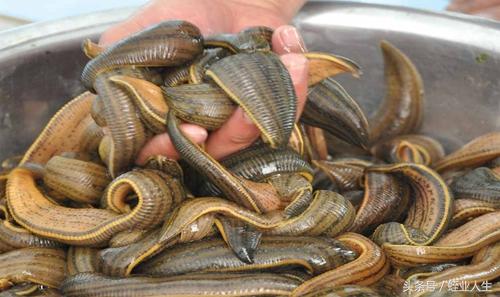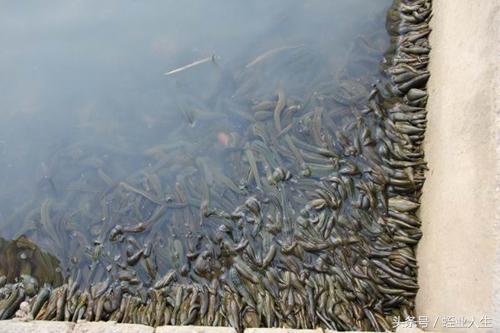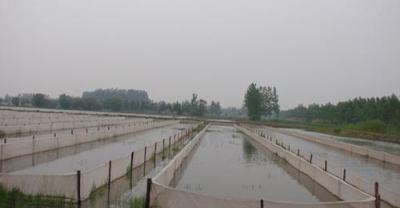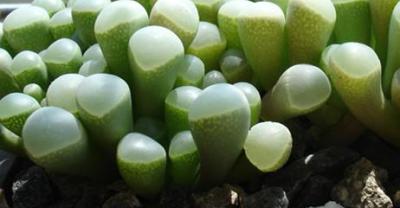Do you still have a headache for the excessive ammonia nitrogen in the breeding process?
In the process of aquaculture, we often encounter the problem of excessive ammonia nitrogen in ponds, which is more serious in high-density intensive ponds, which causes some harm to aquaculture.

Ammonia nitrogen in water exists as molecular ammonia and ionic ammonia. Molecular ammonia is very toxic to fish, and ionic ammonia is not only non-toxic, but also one of the nutrient sources of aquatic plants.
If the concentration of molecular ammonia is too high, it will cause toxemia in aquatic organisms, and the growth of aquatic organisms will be inhibited if it is too high for a long time. The main sources of molecular ammonia are baits, wastes, fertilizers and dead remains of animals and plants that have sunk to the bottom of the pond. The toxicity of molecular ammonia nitrogen is strong, and when the concentration of molecular ammonia in the blood is high, the PH value in the blood of aquatic organisms also increases accordingly, and the activities of many enzymes in the body are affected, resulting in growth inhibition. The higher the temperature and PH value, the stronger the toxicity of molecular ammonia, which is why ammonia nitrogen poisoning is easy to occur when the PH value of pool water exceeds 9 in summer.
The precursor of ammonia nitrogen poisoning
The main results are as follows: (1) the water body is turbid, too fat, low transparency and covered with blue-brown oil film.
(2) the common bubbles rise from the bottom of the pool and can smell the fishy smell on the edge of the pool.
(3) the appetite decreased and the intensity of predation decreased.
(4) sporadic death of aquatic organisms is common.
The way of eliminating ammonia nitrogen
(1) nitrification and denitrification. Ammonia (NH3) is oxidized to nitrous acid by nitrifying bacteria, and nitrous acid is then oxidized to nitric acid by nitrifying bacteria, which is called nitrification. Nitrification consumes oxygen. When the concentration of dissolved oxygen in water is less than 1mg / L, the nitrification rate decreases obviously. In the case of lack of dissolved oxygen in water, when denitrifying bacteria can reduce nitric acid to nitrous acid, nitrous acid, hydroxylamine or nitrogen, this process is called nitric acid reduction. When the formed gaseous nitrogen is released as a metabolite and lost from the system, it's called denitrification.
(2) absorption of algae and plants. Because algae and aquatic plants can use ammonium (NH4+) to synthesize amino acids, the absorption of ammonia nitrogen by algae is the main method of ammonia nitrogen removal in ponds. The reduction and death of algae will significantly increase the content of ammonia nitrogen in water in winter.
(3) volatilization and sediment absorption. In the pond with high concentration of ammonia nitrogen and high pH value, taking measures to increase oxygen will be beneficial to the volatilization of ammonia nitrogen in the case of wind and waves, stirring water flow and so on. The anions in the sediment soil can bind to ammonium ions (NH4+). When pulling the net or similar operations that cause bottom agitation, the bottom sediment will be temporarily suspended in the water and ammonium ions (NH4+) will be released.
(4) mineralization and return to the organism. The so-called mineralization means that part of ammonia nitrogen exists in the soil at the bottom of the pool in the form of organic matter, which is decomposed and then returned to water. The decomposition rate depends on temperature, pH value, dissolved oxygen and the quantity and quality of organic matter. When the concentration of ammonia nitrogen in the water is high, ammonia (NH3 is not NH4+) can enter the aquatic organism.

How to control ammonia nitrogen?
(1) dredging and dry ponds. After the end of culture every year, desilting, dry pond and exposure to the bottom of the pond are carried out, and quicklime, strong chlorine and bleach are used to thoroughly disinfect the bottom of the pond, which can remove ammonia nitrogen, enhance the buffer capacity of the water to pH value, and keep the water slightly alkaline.
Water exchange is the most rapid and effective way, which requires that the quality of the new water added is good, and the temperature and salinity of the new water are as close as possible to the original pool water.
Note: first of all, adjust the water level, keeping the water depth at 1-1.5 meters in summer and 1.3-1.5 meters in autumn. Secondly, the water should be changed regularly, every 10-15 days at the beginning of summer, and once a week from June to September. Pay attention to the freshness of the water when changing the water.

(3) increase the dissolved oxygen in the pond. The use of aerator at the bottom of the pond can maintain sufficient dissolved oxygen in the pond, accelerate nitrification and reduce the toxicity of ammonia nitrogen.
(4) strengthen feeding management. Select high-quality protein raw materials, use feed with higher amino acid digestibility, avoid excessive feeding, and improve the energy and protein ratio of feed.
(5) regular application of water microecological agents in ponds.
(6) other measures. Reasonable stocking density, regular testing of water quality indicators, more aerators (keep the aerator open at noon in sunny days, turn on in the morning in cloudy days, turn on in the middle of the night, do not turn on in the evening, do not turn on in cloudy and rainy days), control the pH of the water between 7.6-8.5, and do not let the pH value of the pond be too high. Photosynthetic bacteria are applied to form a dominant population, which can decompose organic waste, reduce ammonia nitrogen in water and regulate water quality well.

In addition, if the water quality is too strong or deteriorates, first-aid measures should be taken immediately. First, add new water or change water 1pm, 4pm, 3pm, then sprinkle it with quicklime mixed river mud for two times in a row; after the water color changes, stir the bottom of the pond properly and apply fertilizer to adjust the water quality (note: do not apply organic fertilizer).
Factors and time period of ammonia nitrogen exceeding the standard
Excessive ammonia nitrogen usually occurs in the middle and later stages of culture, when the harmful substances at the bottom of the pond continue to deposit due to the increase of residual bait and feces, resulting in excessive ammonia nitrogen, nitrite and so on.
Usually, detoxification to improve water or detoxification purified water is used to decompose the macromolecular organic matter in the settling water body, and then the bottom modification products are tried to decompose the harmful substances deposited at the bottom of the pond. After adjusting the water quality, Chlorella source and Bacillus subtilis need to be used regularly to fertilize and stabilize the water quality. In addition to the frequent injection of new water in hot weather, keep enough dissolved oxygen at the bottom of the water body. At the same time, the regular application of compound microbial preparation and organic biological compound fertilizer every semimonthly can reduce the ammonia nitrogen in the water body, decompose the organic waste in the sediment and inhibit the production of ammonia nitrogen. Sterilizing agents should be applied to the water body to prevent bacterial infection.
For more information about leeches, please follow the official account of Wechat: [Sou Leech], WeChat account-- shuizhicn.
- Prev

Benefits of novice breeders: rapid identification skills for successful conception of sows!
If you can early judge that the sow has been pregnant, you can take corresponding measures, corresponding management, so as not to cause accidents, and if there is no pregnancy.
- Next

Handbook of cultivation and cultivation of Begonia and maintenance of succulent plants
Antler Begonia is a succulent plant of the family Prunus. When it comes to the breeding methods of Malus angustifolia, it can even be said that maintenance is very easy, as long as it is given a good ventilation environment.
Related
- On the eggshell is a badge full of pride. British Poultry Egg Market and Consumer observation
- British study: 72% of Britons are willing to buy native eggs raised by insects
- Guidelines for friendly egg production revised the increase of space in chicken sheds can not be forced to change feathers and lay eggs.
- Risk of delay in customs clearance Australia suspends lobster exports to China
- Pig semen-the Vector of virus Transmission (4)
- Pig semen-the Vector of virus Transmission (3)
- Five common causes of difficult control of classical swine fever in clinic and their countermeasures
- Foot-and-mouth disease is the most effective way to prevent it!
- PED is the number one killer of piglets and has to be guarded against in autumn and winter.
- What is "yellow fat pig"? Have you ever heard the pig collector talk about "yellow fat pig"?

